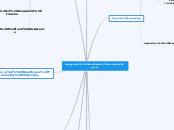Singapore's Healthcare Financing System
Medifund
Strictly subjected to means testing
Govt. endowment fund set up to help needy Singaporeans to access healthcare
Principles of Medifund Assistance
Personal responsibility
Medical necessity
Family responsibility
Many helping hands
Medifund Silver
ILTC sector to benefit more elderly patients
Singaporean aged 65 years or above
Medifund Junior
For needy Singaporean children below 18 to tap on to defray their healthcare cost
Medifund Approval Level
Level 1
Public Assistance
Approval: Exemption
Level 2
Straight forward (SF) Applications
Approval at MSW level
Level 3
Non-Straightforward (NSF) Applications
Approval by Medifund Committee
Medical Assistance Fund (MAF)
Cover NSDL drugs
Increase maximum subsidy level of 50% to 75% upon assessment by MSW
Deducted first before using patient's Medifund or Medisave
Calculation of Household Income
Household Income (HI) = Monthly Per-Capita Household Income (gross income net of CPF deductions)
Maximum Medifund Assistance
Inpatient Admission
Only C class patient enjoy 100% Medifund Assistance
Non-resident (NR) and Permanent Resident (PR) are not assisted by Medifund
Out-of-pocket
Cash paid by the patient
Most regressive form of financing
Financial Counselling
Patient's Decision
Choice of class: Primary private or subsidized
To proceed or not to proceed with treatment
Seek alternative options at other institutions
Standard or non-standard options
Rationale
Mandatory that estimated bill size information be given for inpatient or day surgery treatment because they are large billstopic
To save patients and families from financial burden
Application of Means Testing
Individual
Means Testing
Inpatient admission
Household
Means Testing
Inpatient downgrading
SOC enhanced subsidy
ILTC subsidy
Medifund application
CHAS application
Seniors’ Mobility and Enabling Fund (SMF)
Interim Disability Assistance
Programme for the Elderly (IDAPE)
Insurance & Employment Medical Benefit
Insurance Concepts
Catastrophic medical insurance (MediShield Life)
To help members meet medical expenses from major illnesses, which could not be sufficiently covered by their Medisave balance
Basic health insurance plan that helps patients cope with large hospital bills and selected costly outpatient treatments
Designed to cover medical expenses (excluding the deductible and co-insurance) for stay in Class B2/C wards at public hopsitals
Offers
Better protection and higher payouts, so that patients pay less Medisave/cash for large hospital bills
Protection for life
Cover Singaporeans and PR who were previously not covered under Medishield
Protection for all Singaporeans and PR, including the very old and those who have pre-existing conditions
Philosphy
Covering them through their lives by taking advantage of risk-pooling
Affordable premiums
Avoiding "buffet syndrome" by setting limits on payouts and requiring patient co-payment (coinsurance)
Co-payment and deductibles can be paid using Medisave or cash but not for payment of riders
Better Benefits
Higher claim limits
Lower co-insurance rates
Medishield Life pays more patients pay less
Long-term Insurance (ElderShield)
National insurance scheme which provides basic financial protection to individuals with severe disability and need long term care
Form of risk pooling
ElderShield is a long-term care insurance scheme targeted at severe disability which provides monthly payouts of $300 or $400 per month
Premium is automatically deducted from Medisave when the individual reached 40 years of age, unless the individual opts
Co-ordination of benefits clause
Medical Insurance policies has Co-ordination of Benefits clause
Total claims made by the owners will always be equal to the total medical expenses incurred
Claim processing rules requires submission of original bills
Civil Service Medical Benefits
Comprehensive Co-payment Scheme (CCS)
Medisave-cum-Subsidised Outpatient Scheme (MSO)
Co-Payment on Ward Charges Scheme (CPW)
Challenges of Singapore's Healthcare System
Ageing population
Increasing incidence of chronic disease
Increasing demand for more healthcare services
Increasing demand for more affordable healthcare
Singapore's Healthcare Financing Philosophy
Offers universal healthcare coverage to all citizens
Promoting competition and transparency
Individual responsibility and affordable healthcare to all citizens (multiple tiers of protection)
3 major shifts to Singapore’s healthcare financing framework
Increase Government share of our national healthcare expenditure
Gradually expand Medisave use
Enhance collective responsibility for healthcare
Singapore's Public Healthcare Landscape
Competition & Centralization: Leading to better service and lower costs
Centralization through Clustering: Creates cost savings through consolidation
Group Purchasing Office (GPO)
Finance Shared Services (FSS)
Integrated Health Information System (IHIS)
Competition creates price diversity and amidst regulation
Post 2010 Public Healthcare Landscape
Regional Groups or Clusters were created to enable integrated care
Hospitals, polyclinics, community hospital, education centre and specialty centers under each group
Partner with general practitioners, polyclinics and other health-care providers in the area
“Build partnerships and seek synergies beyond the public sector”
Medisave
CPF Board
Role: Regulatory
Exception
Precedent
MOH
Role: Executive
Precedent
National scheme of mandatory individual medical savings account
Depending on age, between 8% - 10.5% of one’s monthly salary is automatically deposited into Medisave account
Applicable for personal or immediate family's hospitalization, day surgery and certain outpatient expenses
Applicable for personal or immediate family's hospitalization, day surgery and certain outpatient expenses
The rich will have more Medisave savings than the poor
